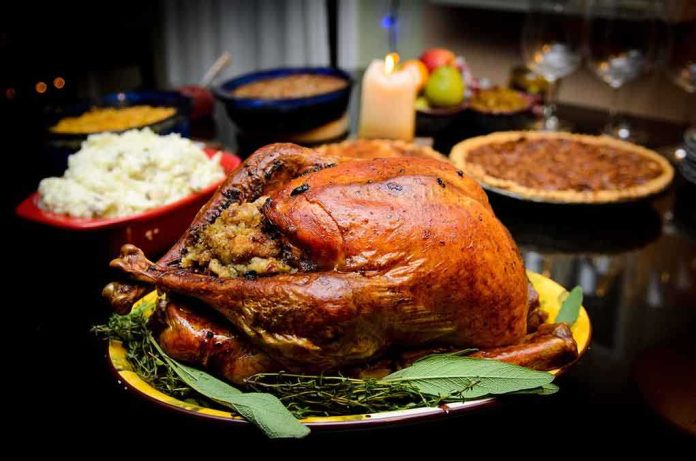
The foods you think are “bad” for your blood sugar this Thanksgiving might actually help stabilize it.
Story Snapshot
- Traditional Thanksgiving foods labeled as “bad” may benefit blood sugar control.
- New research highlights the role of fiber, protein, and healthy fats.
- Emphasis on moderation and preparation methods to manage blood sugar.
- Enjoying Thanksgiving without anxiety through informed choices.
Reevaluating Thanksgiving Traditions
Thanksgiving is synonymous with a feast that can be daunting for those managing diabetes. Foods like turkey with gravy, mashed potatoes, and cranberry sauce have long been viewed as culprits in causing blood sugar spikes. However, current research suggests that with the right preparation, these foods can actually help maintain blood sugar stability. Understanding the nutritional science behind these ingredients can empower you to enjoy your meal while keeping health in check.
Potatoes, often demonized for their high glycemic index, can fit a diabetic-friendly meal plan when consumed with their skins, which are rich in fiber. This fiber can slow down glucose absorption, preventing sudden spikes in blood sugar levels. Similarly, cranberry sauce, notorious for its sugar content, can be made with less sugar and whole cranberries to boost fiber and antioxidant intake, offering benefits for blood sugar control.
Shifting Perspectives on Holiday Foods
Stuffing, typically seen as a no-go due to refined carbohydrates, can be transformed using whole grains and added vegetables to increase fiber content and lower its glycemic impact. Turkey, a central Thanksgiving staple, is a lean protein that can promote satiety and stabilize blood sugar when prepared without excessive fats. These examples illustrate how traditional foods, once viewed as problematic, can be part of a healthy holiday meal.
Experts recommend starting the Thanksgiving day with a balanced breakfast to prevent overeating later. Incorporating non-starchy vegetables like green beans, carrots, and brussels sprouts into your meal can further aid in blood sugar management. Emphasizing portion control, meal timing, and post-meal physical activity, such as a walk, can enhance these benefits.
Beneficial Foods and Their Preparation
Turkey, potatoes, stuffing, cranberry sauce, and even pumpkin pie can be enjoyed with mindful preparation and portioning. Turkey, when roasted or grilled without excessive fat, remains a lean protein source. Potatoes, with their skins, provide essential fiber. Whole grain stuffing with vegetables adds nutrients and reduces blood sugar impact. Homemade cranberry sauce with reduced sugar offers antioxidants. Pumpkin pie, when enjoyed in small portions and made with less sugar, can be a fitting dessert.
Meal timing plays a crucial role in blood sugar management. Avoid skipping meals and maintain regular eating intervals. Incorporating a variety of food groups, including proteins, fibers, and healthy fats, ensures a balanced meal. This comprehensive approach helps manage blood sugar more effectively than restriction alone, allowing for a more inclusive and enjoyable Thanksgiving experience.
The Evolution of Holiday Eating Guidance
Historically, dietary advice for diabetes focused on strict avoidance of certain foods. However, advances in nutritional science advocate for balanced eating and individualized meal planning. The shift from restriction to moderation reflects a broader understanding of nutrition’s role in managing health. This perspective encourages people to enjoy traditional foods without guilt, provided they make informed choices about preparation, portion size, and meal composition.
Healthcare professionals, nutritionists, and diabetes educators are pivotal in disseminating this updated guidance. Their insights help reshape public perceptions, emphasizing that traditional holiday foods can be part of a healthy diet. By focusing on inclusion rather than restriction, this narrative fosters a more positive and less stigmatizing approach to holiday eating for those with diabetes and prediabetes.









